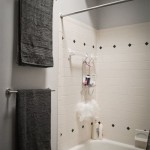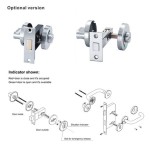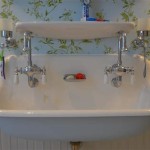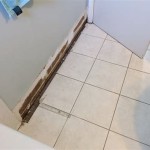How Do You Turn A Dresser Into A Bathroom Vanity Unit
Transforming an ordinary dresser into a functional bathroom vanity unit can be an exciting DIY project. It allows you to personalize your bathroom with a unique piece of furniture, adding a touch of character and functionality to your space. The process involves a combination of renovation, plumbing, and creative design, but with careful planning and execution, even a novice can achieve a successful conversion.
Preparing the Dresser
The first step in turning a dresser into a bathroom vanity is to thoroughly prepare it. This involves cleaning, prepping, and potentially modifying the dresser to suit its new purpose.
Begin by cleaning the dresser thoroughly. This involves removing any dust, grime, or residue using a mild cleaning solution and a soft cloth. Pay particular attention to the drawers and the surfaces where the sink will be installed. Once the dresser is clean, sand down any rough edges or imperfections to ensure a smooth finish. If the existing paint or stain is not desired, it should be stripped or sanded down to the raw wood before painting or staining.
Next, consider the necessary modifications. This could include adding or removing drawers, adjusting the height of the dresser, or reinforcing the top surface to accommodate the sink and its weight. Depending on the design and the intended placement, you may need to cut out a space for the plumbing or consider adding additional storage compartments.
Installing the Sink and Plumbing
One of the most crucial aspects of turning a dresser into a bathroom vanity is installing the sink and plumbing. This requires careful planning and adherence to plumbing codes.
First, choose a sink that fits the style and size of the dresser. Consider the available space, the desired look, and the type of plumbing required. For example, a vessel sink, with its exposed bowl, may be suitable for a smaller dresser, while a countertop sink may require a larger surface area. Once the sink is chosen, determine the appropriate faucet and consider its style and functionality.
The next step involves connecting the plumbing. This may involve installing a new drain line or connecting to an existing one. It is essential to consult a professional plumber to ensure the plumbing is installed correctly and conforms to local building codes. This will prevent leaks and ensure the water flows smoothly.
Finishing Touches
After installing the sink and plumbing, add the finishing touches to complete the transformation. This involves incorporating design elements that personalize the vanity and enhance its functionality.
Consider adding storage solutions to maximize the functionality of the vanity. This could include adding shelves, organizers, or drawers within the existing cabinet space. You may also want to incorporate a mirror above the sink to create a complete vanity experience. Choose a mirror that complements the overall design of the dresser and the bathroom space.
Finally, don't forget about the finishing touches. This could include painting or staining the dresser to match your bathroom decor, adding decorative hardware, or installing lighting to illuminate the vanity area. These details can significantly refine the overall look and feel of the vanity unit, enhancing its aesthetic appeal.

How To Make A Dresser Into Vanity Tutorial An Oregon Cottage

Turn A Vintage Dresser Into Bathroom Vanity
/103058794-9279662b921c41259cb908f3cb19acd9.jpg?strip=all)
How To Turn An Old Dresser Into A Beautiful Bathroom Vanity

How To Convert A Dresser Into Bathroom Vanity The Little By Home

Stunning Bathroom Tour Dresser Into Double Vanity

How To Turn A Dresser Into Bathroom Vanity Wildfire Interiors

How To Convert A Dresser Into Bathroom Vanity

How To Turn A Dresser Into Bathroom Vanity

How To Turn A Cabinet Into Bathroom Vanity

Stunning Bathroom Tour Dresser Into Double Vanity
Related Posts






